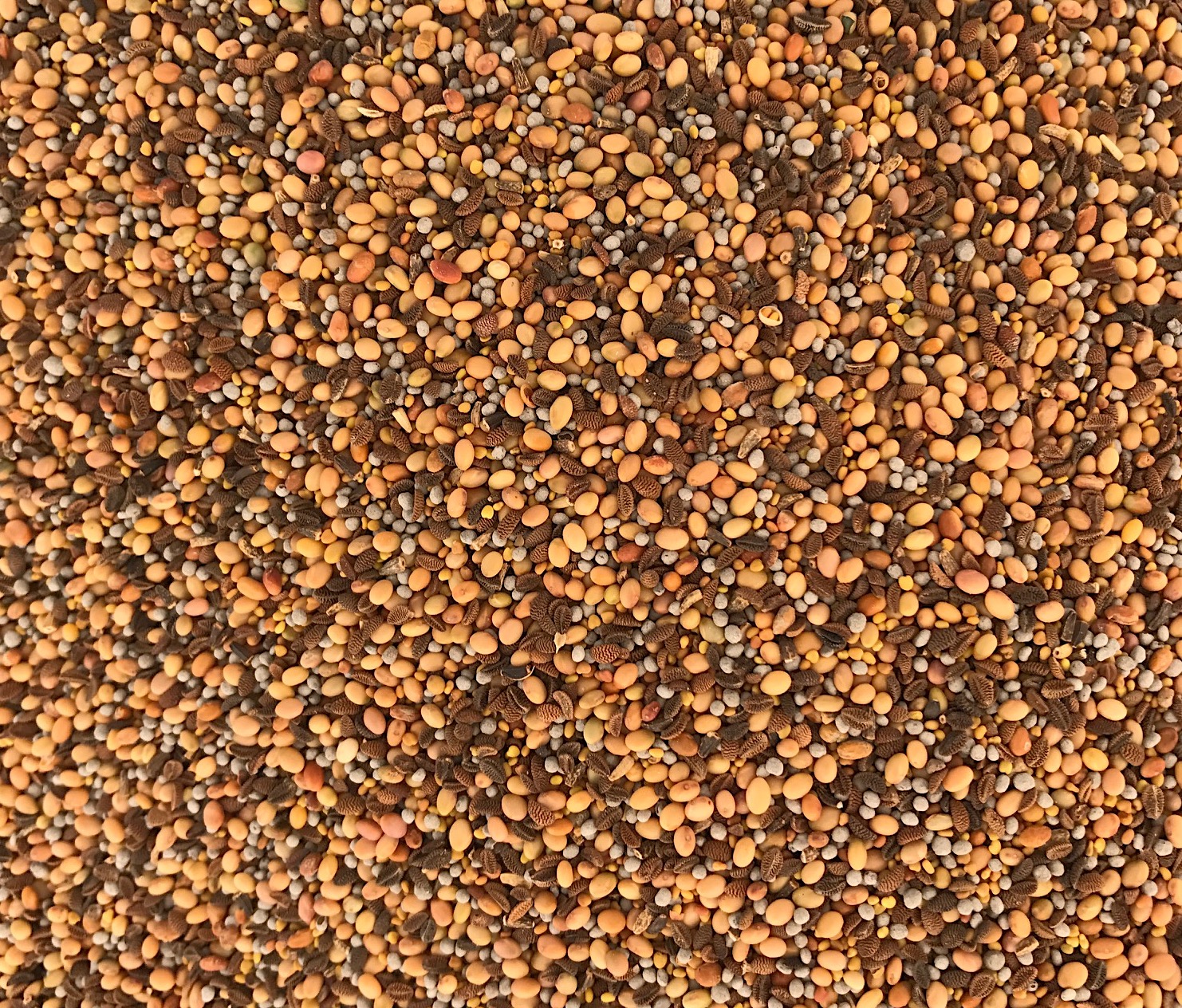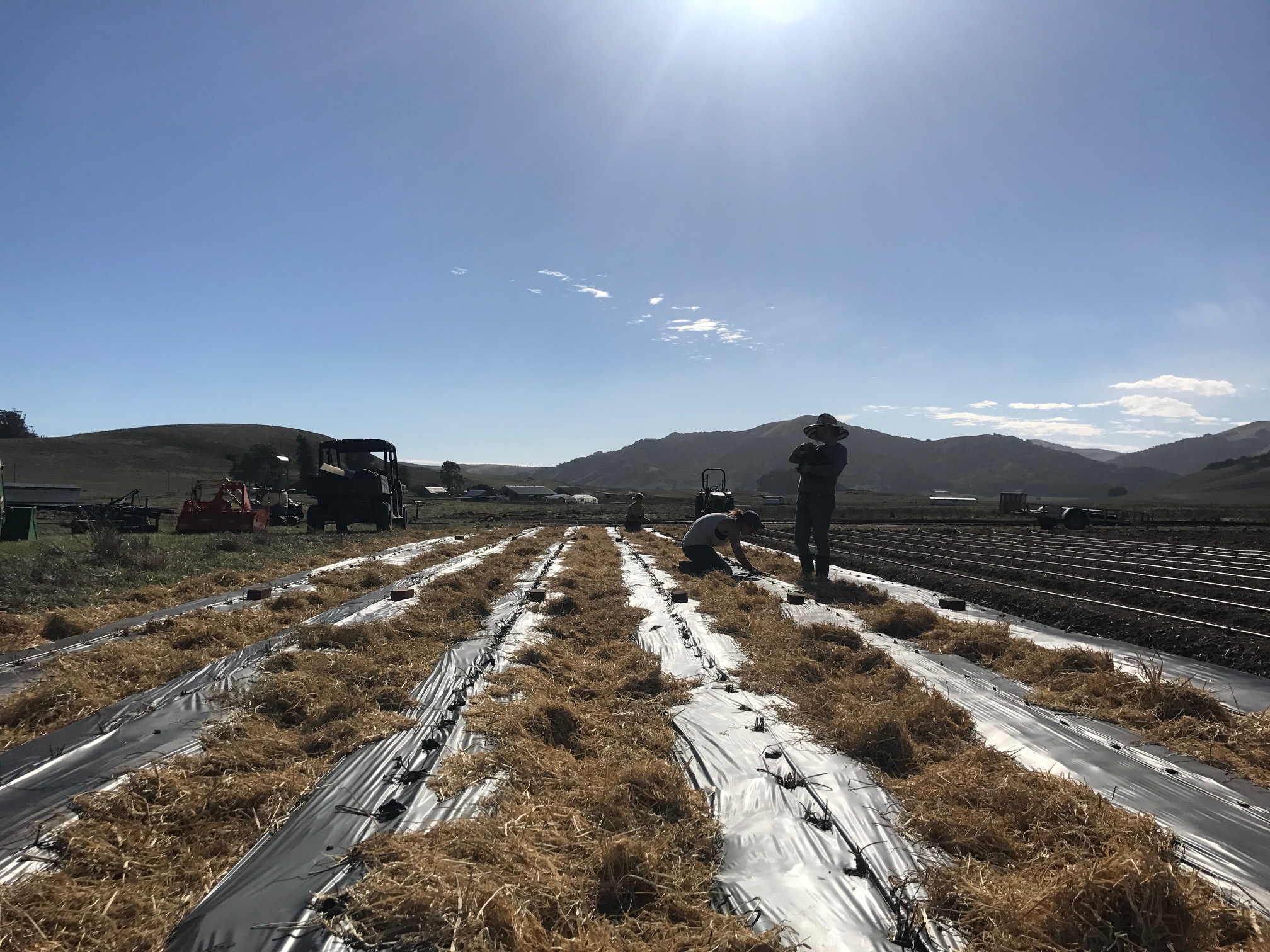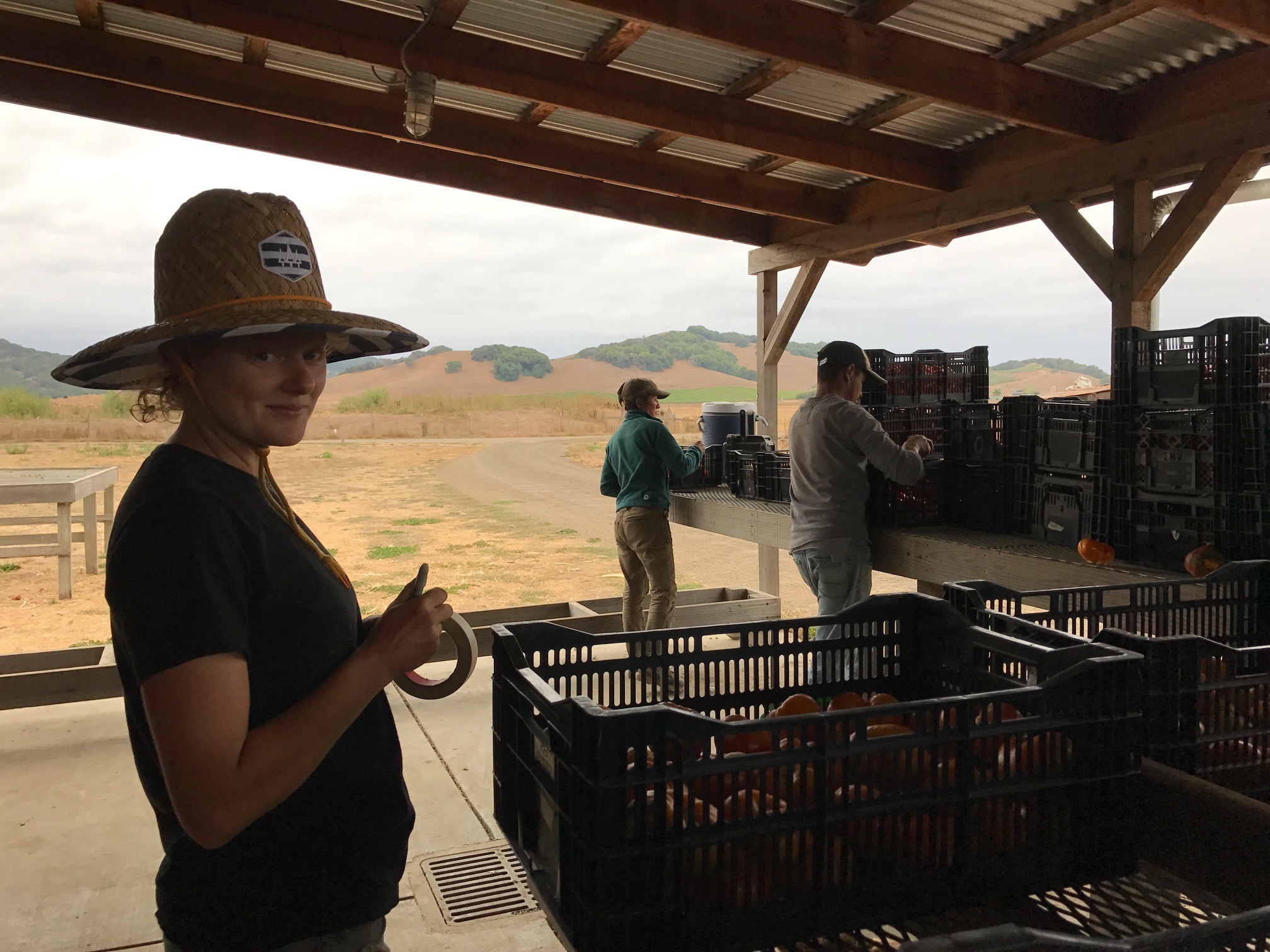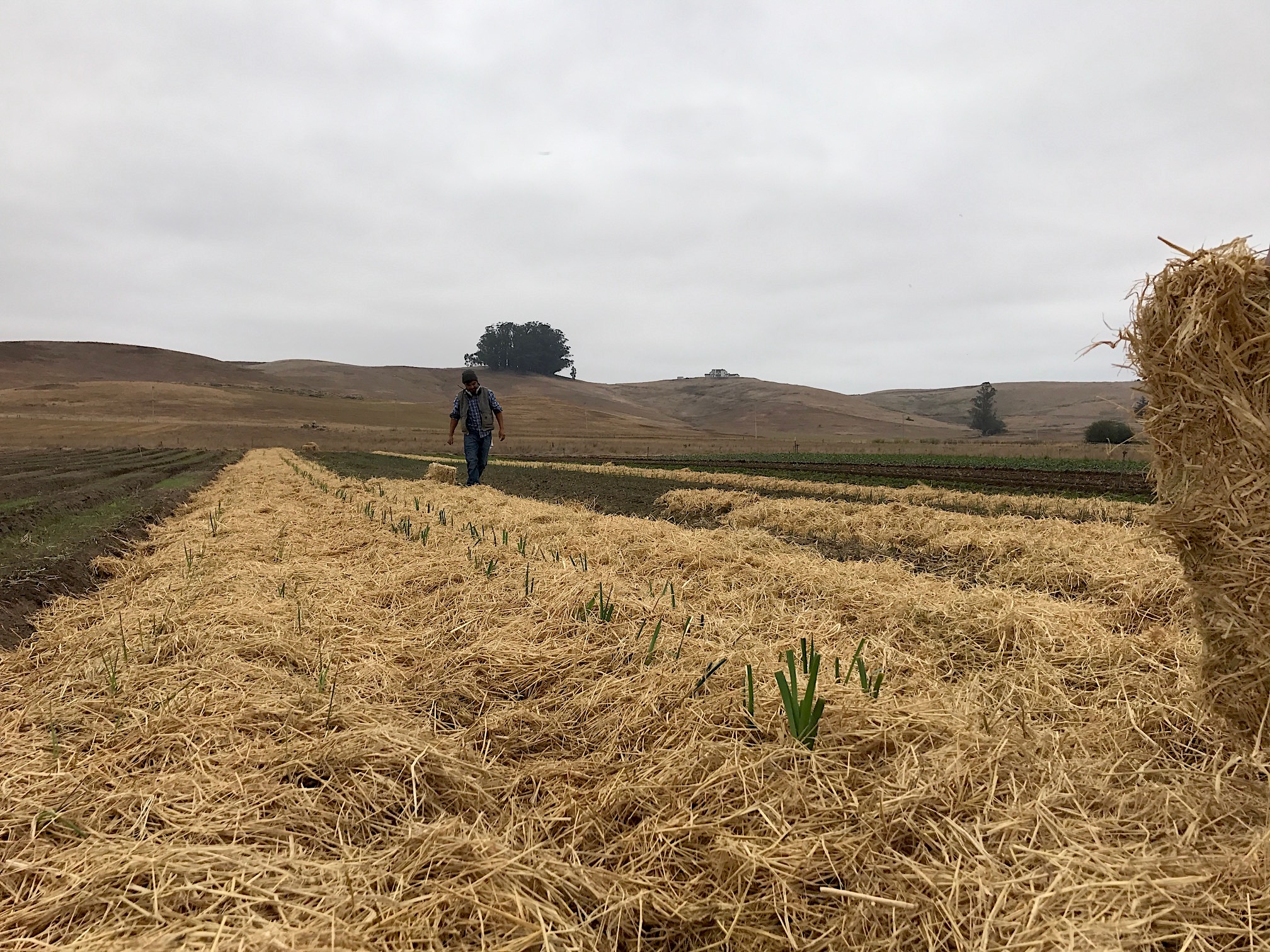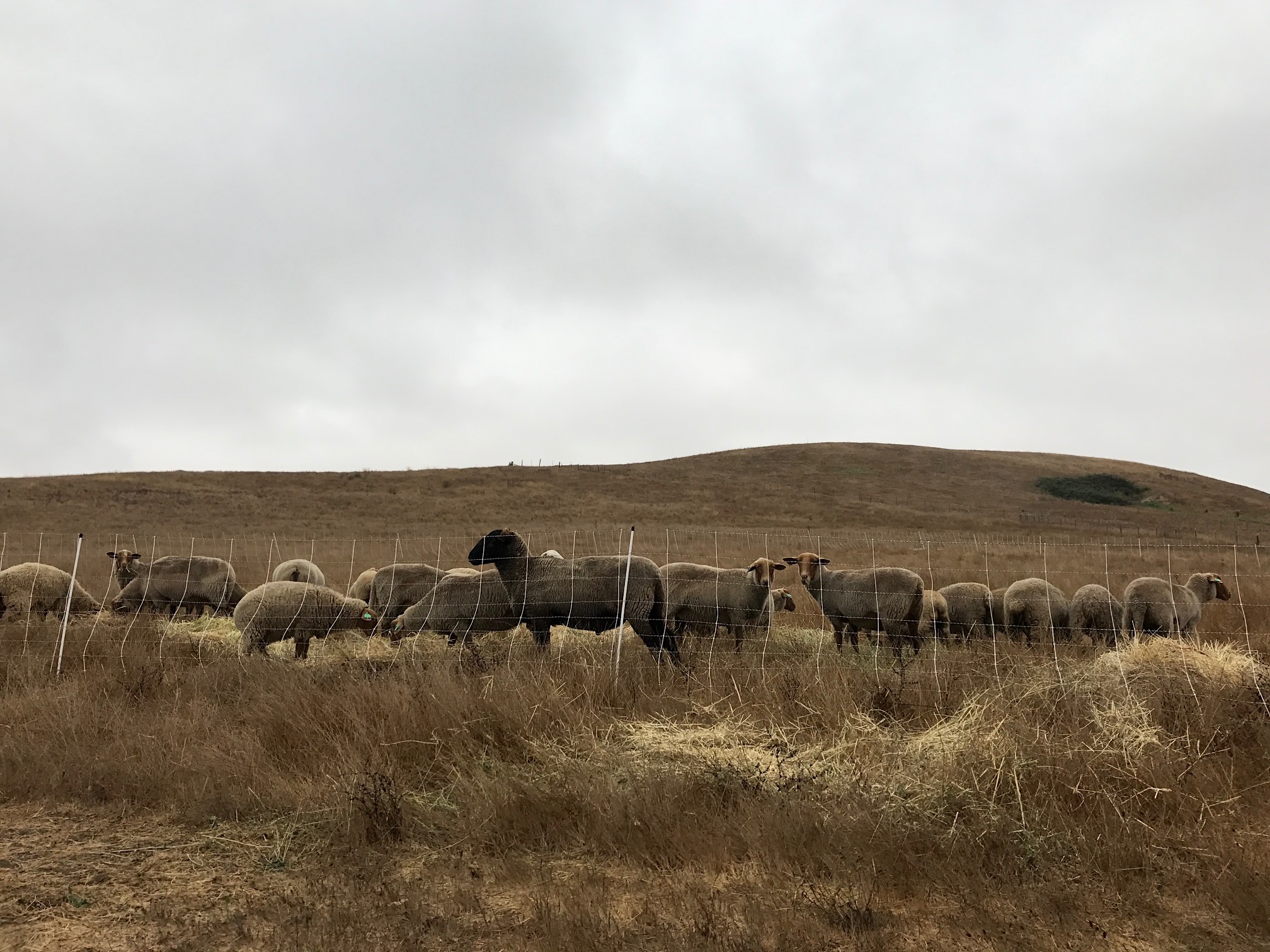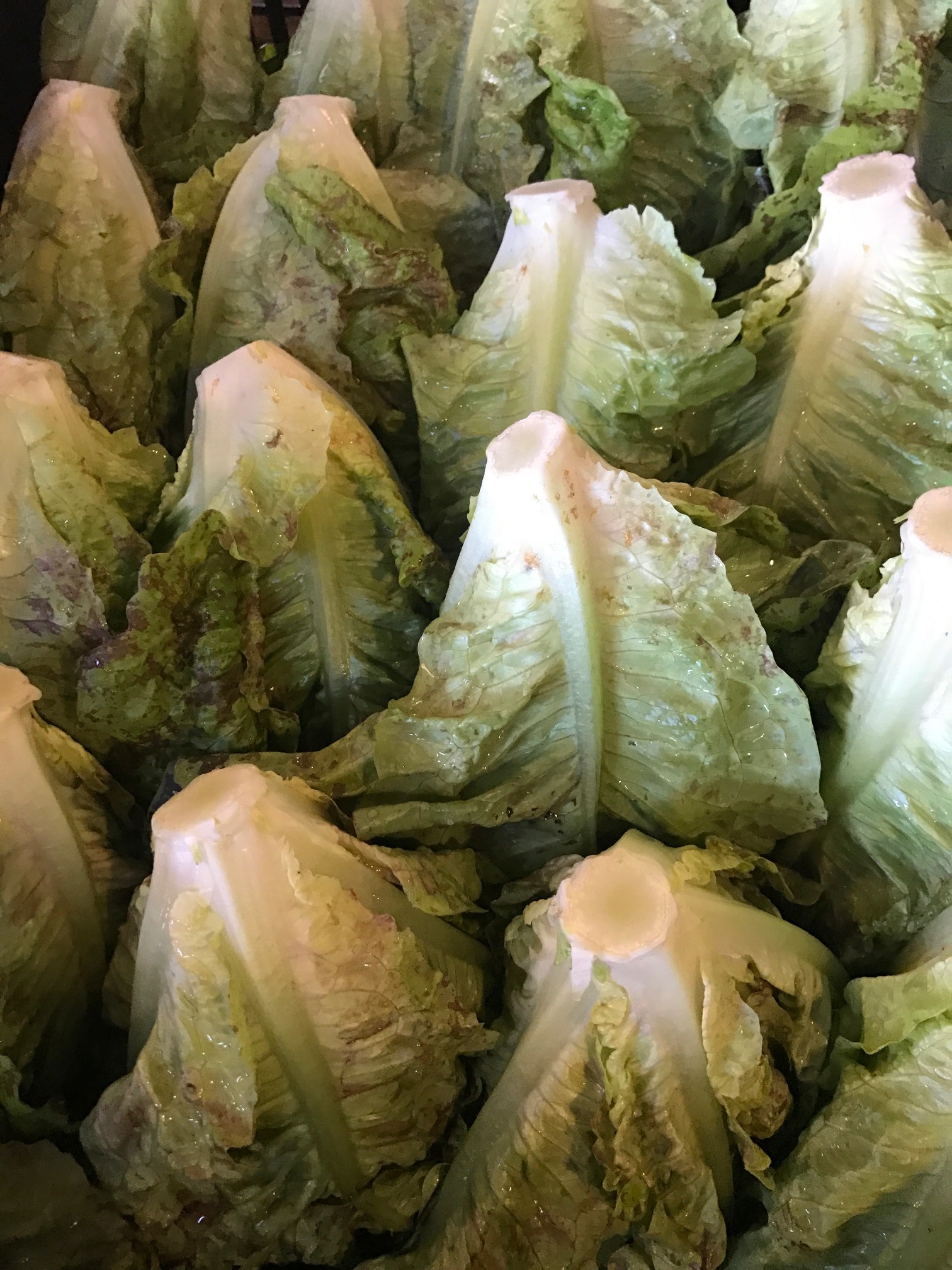In the wake of more devastating fires, we are struggling to process these events and know how to move forward. Our thoughts are with those that have experienced loss.
In addition, the dry yet extremely cold conditions are taking a toll on the plants and us. The frost killed not only the few remaining summer plants but the beautiful peas as well. And still this week we are seeding our final fields with cover crop, hoping that the rain predicted for next week will arrive to refresh and nourish us all. We find solace in the new beginnings that the seeds represent and in our relationships with each other and you. We hope that the small steps we take to care for the Earth will make a difference.
This week’s pick list:
Lettuce
Broccoli
Brussel sprouts
Green chiles
Onions
Beets
Chard
Cabbage
Radishes
Leek
Carrots
Frisee, Escarole, Sugarloaf, and Radicchio
Garlic
Kale
Turnips
Potatoes
Cauliflower
Winter squash
Rutabaga
Parsnip
Parsley
Revolution Bread is available.
Roast Parsnips and Kale with Stilton, from ottolenghi.co.uk
6 parsnips, peeled, trimmed and cut into 7cm-long and 2cm-wide wedges
3 red onions, peeled and cut into 3cm-wide wedges
60 ml olive oil
3 garlic cloves, peeled and crushed
5 g picked thyme leaves
Salt and freshly ground black pepper
220g kale, stalks removed and discarded (or saved for something else – they’re great parboiled, then put in a gratin), to leave 110g leaves, cut into 4cm-wide slices
80g stilton, roughly crumbled into 1cm pieces
For the dressing
115 g pickled walnuts, roughly chopped, plus 3 tbsp pickling liquor
60 g walnuts, roughly chopped
15 g parsley leaves, roughly chopped
2 tbsp olive oil
Heat the oven to 220C/425F/gas mark 7. Put the parsnips and onions in a medium bowl with two tablespoons of oil, two garlic cloves, the thyme, half a teaspoon of salt and lots of pepper. Spread out on a large oven tray lined with greaseproof paper. Put the artichokes on a separate lined tray, mixed with a tablespoon of oil, a quarter-teaspoon of salt and plenty of pepper. Roast both trays for 20 minutes, until the parsnips and onions are cooked and caramelised, and the artichokes are just cooked through, then tip both into a large bowl and keep warm.
Mix the dressing ingredients with a third of a teaspoon of salt and set aside until required.
Bring a medium saucepan of water to a boil, add the cavolo nero and blanch for two minutes. Drain, refresh under cold water and pat dry.
Put the final tablespoon of oil in a large frying pan on a high heat, then fry the remaining garlic clove until just starting to brown; about 30 seconds. Add the cavolo nero and an eighth of a teaspoon of salt, and fry for four to five minutes, stirring often, until it starts to brown. Add to the veg bowl and, just before serving, gently mix in the dressing. Spread out on a large platter, sprinkle over the stilton and take to the table.

